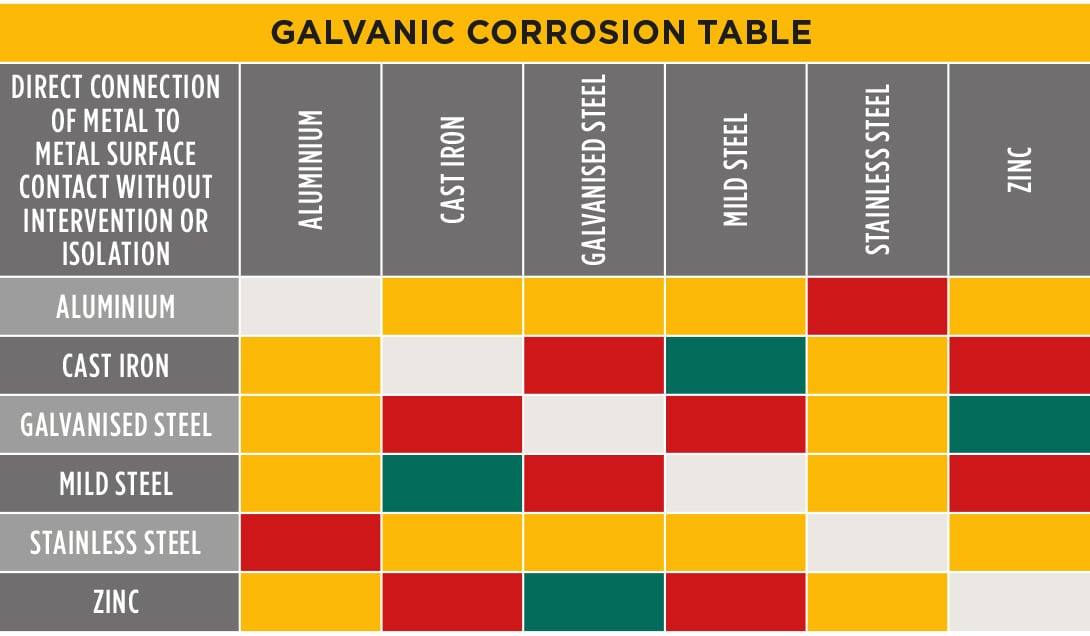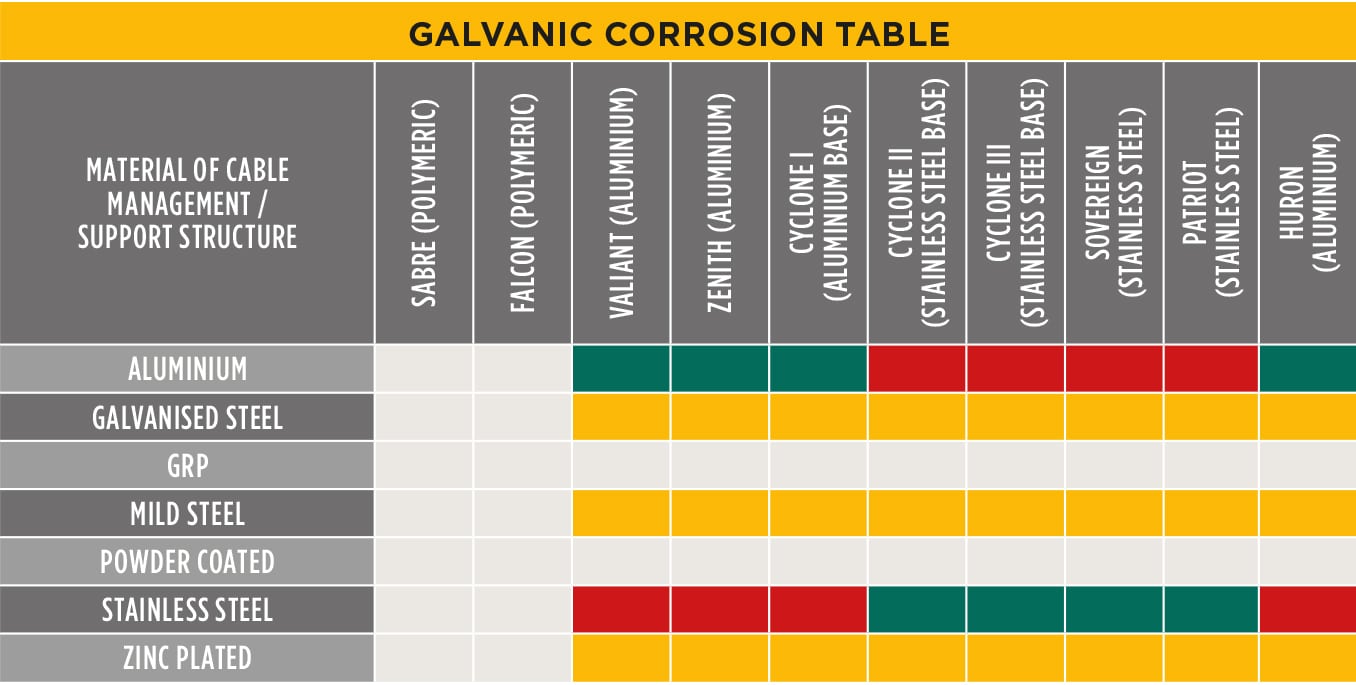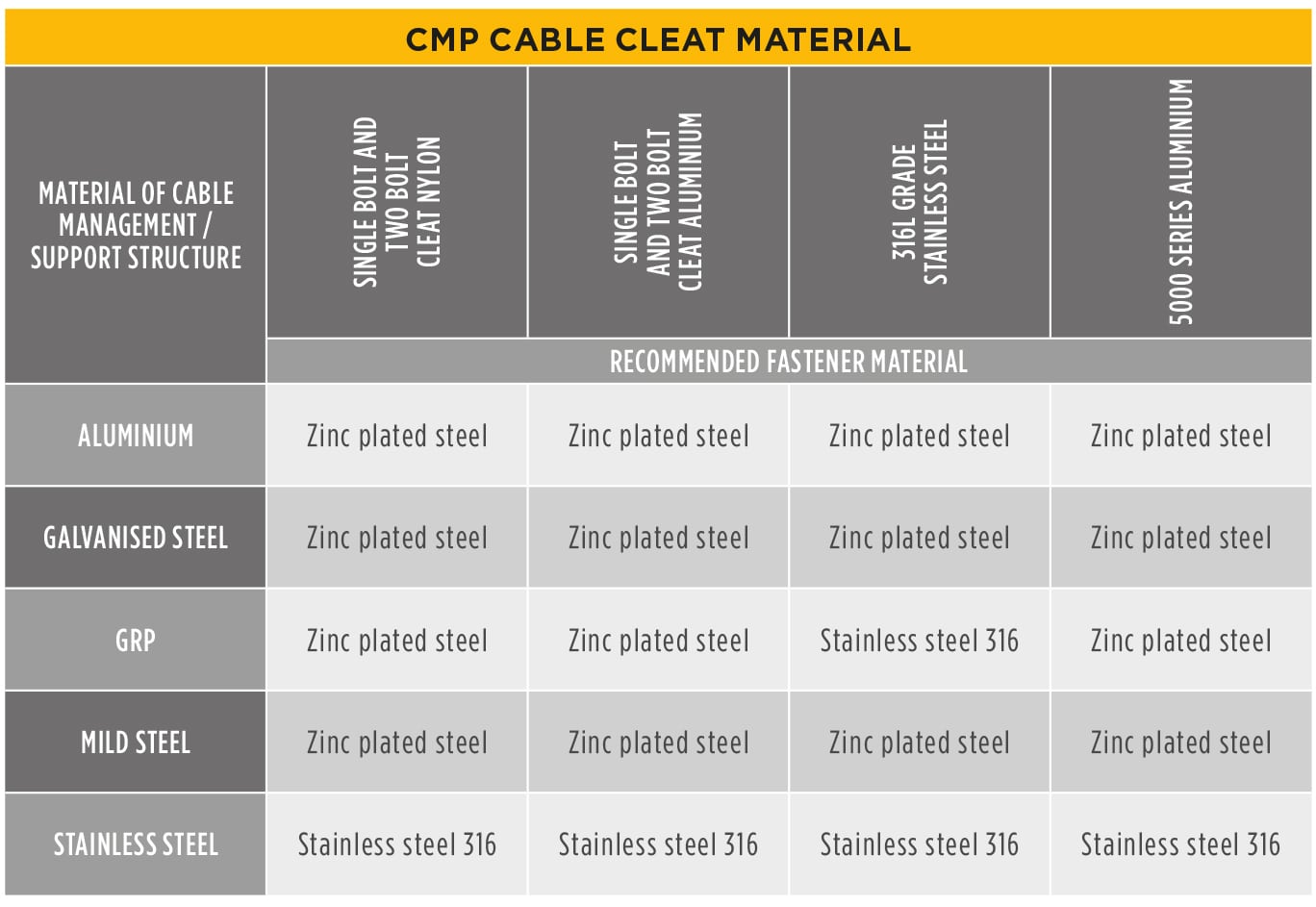- Home
- Cable Cleats for Electrical Installations
- Technical
- Galvanic Corrosion
- Certificate Downloads
- Cable Cleat Accessories
- Cable Cleat Nut Spacer
- Cable Cleat Selection
- Cable Formations
- Recommended Cleat Spacings
- Catalogue Downloads
- Cleat Fixing Packs
- Fire Performance
- Galvanic Corrosion
- Good Installation Practices
- How To Order
- Intermediate Restraints
- Materials
- Product Downloads
- Product Overview
- Resistance Classifications
- Twin arc profiles
- What is a Cable Cleat?
- What is a Short Circuit?
- Why use a Cable Cleat?
Need more help? Contact our team on +44 191 265 7411
Galvanic Corrosion (Bi-Metallic Corrosion)
Galvanic corrosion (Bi-metallic corrosion) is the corrosion that occurs when dissimilar metals are in contact in the presence of an electrolyte.
Dissimilar metals and alloys have different electrode potentials, and when two or more come into contact with an electrolyte, one metal acts as anode and the other as cathode. The electrolyte acts as a path for ion migration between the two metals, and the electro-potential difference between the dissimilar metals causes the anode metal to dissolve in to the electrolyte, and deposits collect on the cathode metal.
CMP advises the cable cleat and support structure combinations shown in the following tables.
Cable Cleat Fixings / Support Structure Galvanic Corrosion Table

Generic Corrosion Data Table

Cable Cleat / Support Structure Galvanic Corrosion Table

Cable Cleat Fixings / Support Structure Galvanic Corrosion Table
